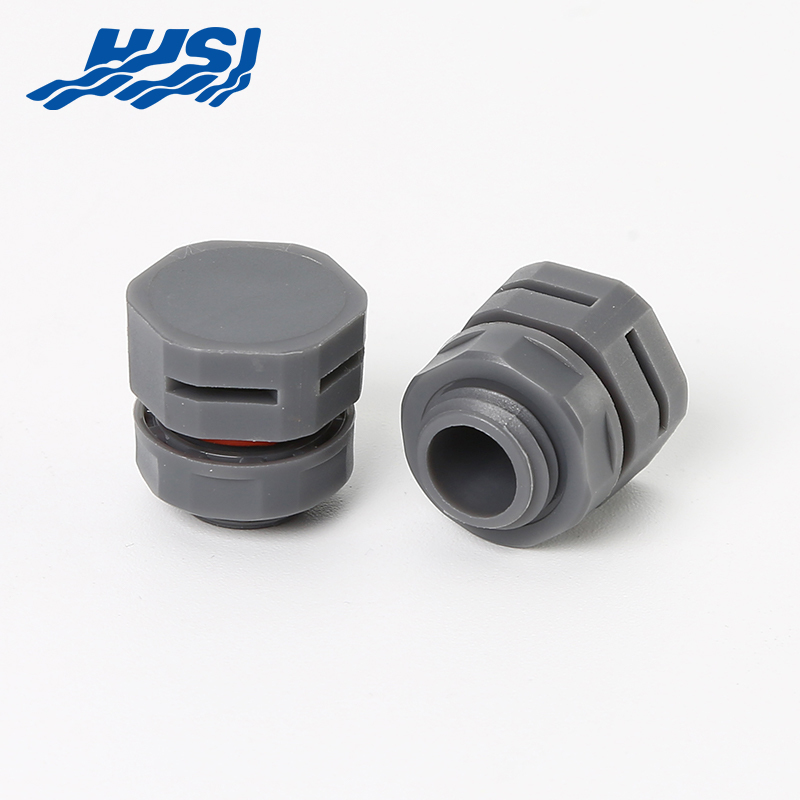A small plastic deck nylon cable gland is a crucial component in electrical and electronic systems, providing secure and safe entry points for cables through panels or enclosures. These glands, typically made from nylon or similar plastic materials, serve both mechanical and electrical purposes, ensuring that cables remain tightly sealed and protected from environmental factors such as water, dust, and chemicals.

Material Durability: Nylon is widely used in cable glands due to its good mechanical properties. It is resistant to corrosion, weathering, and chemicals, making it suitable for outdoor environments. The material’s strength and flexibility ensure that the glands can handle different cable types, preventing damage during installation or over time.
Environmental Protection: One of the primary functions of a small plastic deck nylon cable gland is to provide environmental protection. The gland features seals or gaskets that prevent the ingress of moisture, dust, and other contaminants that can affect the integrity of electrical systems. This is especially important for outdoor applications where the system is exposed to changing weather conditions.
Easy Installation: Designed for simplicity, nylon cable glands are often easy to install and require small tools. The glands typically feature a threaded body that securely attaches to the panel or enclosure. This allows for a quick and secure cable entry, enhancing efficiency during the setup process.
Cable Size Flexibility: Small plastic deck nylon cable glands are available in various sizes to accommodate different cable diameters. This flexibility allows users to select the right gland based on the size of the cable being used, ensuring a tight and secure fit.
Compact and Lightweight: These cable glands are designed to be compact and lightweight, making them ideal for space-limited installations. Their small size does not compromise their performance, as they still provide good sealing and mechanical protection for the cables.
Small plastic deck nylon cable glands are versatile and used in various industries. Some of the key applications include:
Automotive Industry: In automotive systems, the need for reliable cable management is critical. Small plastic deck nylon cable glands are often used in vehicles to route cables securely through the chassis or panels. The glands prevent dust and moisture from entering the system, which helps maintain the longevity of the electrical components.
Industrial Machinery: Many industrial machines, such as those in manufacturing plants or construction sites, require secure and durable cable glands for wiring. Small plastic deck nylon cable glands ensure that the electrical systems remain protected from contaminants, vibrations, and mechanical stress.
Electrical Enclosures: In both residential and commercial electrical systems, cable glands are frequently used to bring cables into junction boxes or electrical enclosures. These glands are essential for ensuring that cables are securely attached and that the enclosure remains sealed against external elements.
Corrosion Resistance: Unlike metal cable glands, which can rust or corrode when exposed to moisture, small plastic deck nylon cable glands offer long-lasting resistance to corrosion. This makes them suitable for applications in challenging environments such as outdoor installations, marine equipment, and more.
Electrical Insulation: Nylon offers good electrical insulation properties, helping to prevent any short circuits or electrical hazards. This is particularly important in systems where electrical safety is paramount, such as in industrial or telecommunications setups.
Lightweight and Space-Saving: These glands are ideal for situations where space is limited or when reducing the weight of equipment is a priority. The small size and lightweight nature of nylon cable glands ensure that they don’t add unnecessary bulk or weight to the installation.
Small plastic deck nylon cable glands play an essential role in protecting and managing cables across a range of industries. Their combination of durability, environmental protection, and ease of installation makes them a practical solution for ensuring the longevity and safety of electrical systems.